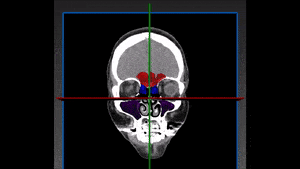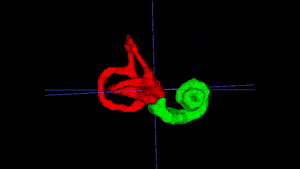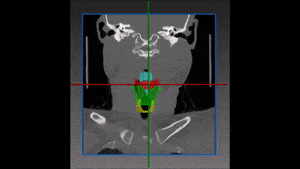The paranasal sinuses are air-filled spaces surrounding the nasal cavity. The sinuses include the maxillary, frontal, ethmoidal and sphenoidal sinuses. Due to being air filled, the sinuses make the skull lighter and help with filtration of inhaled air.

Sinusitis is the inflammation of the lining mucous membrane of the sinus cavities, which can be caused by infection (viruses, bacteria or fungi) or allergy. The condition is very common, affecting one in 7-8 people in the United States and other Western countries. Symptoms include nasal mucopurulent discharge, nasal congestion, facial pain and reduction or loss of sense of smell. Persisting of symptoms for longer than 12 weeks is considered chronic sinusitis. The diagnosis of chronic sinusitis is based on clinical symptoms as well as imaging and or endoscopy.
The proximity of the paranasal sinuses (especially the frontal or sphenoid sinuses) to the brain may cause serious complications. These complications can arise due to bacterial infection of the sinuses spreading to the brain via bone and blood vessels. Once the infection reaches the brain, it may lead to meningitis or to formation of brain abscesses. In addition, proximity to the orbit may result in periorbital or orbital cellulitis and abscesses.
Chronic sinusitis significantly reduces the quality of life. In severe cases of sinusitis, surgery is indicated. Surgical alternatives include Functional Endoscopic Sinus Surgery (FESS) and Sinus ostial dilation (balloon ostial dilation). The latter is a procedure in which a balloon catheter is used to dilate the sinus ostium.
Automated sinus segmentation.
RSIP Vision has created a computer vision algorithm to segment the sinuses on computerized tomography (CT). Using our algorithm, the sinus ostium can be identified and utilized for guidance of balloon inserted as part of a sinus ostial dilation. Our algorithm easily separates air, soft tissues and bony structure even under the presence of unique pathologies. Classical algorithms, based on the modeling of the sinuses, are combined with cutting edge deep learning methods into a full module designed to producing the most accurate automated sinus segmentation. Want to know more? Talk now with one of our medical imaging experts.

 ENT
ENT
